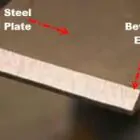Most of the time, the heavy duty or high-performance welding process is used to join together large parts, like the wheel rims of combine harvester wheel rims, excavators, telescopic handlers, or truck semi-trailers. Most of the time, high welding speeds are used in these processes. This lets long weld seams and joints with little spatter be made. Read on to learn what heavy duty welding is, how it came to be, and what it can be used for and what kinds of materials can be used with it.
What is “Welding Heavy Duty”?
Heavy duty gas metal arc (GMAW) welding uses one or more solid wires that are 1.0 mm or 1.2 mm in diameter. Today, a process is considered heavy duty or high performance if it feeds more than 15 metres of wire per minute. High-performance welding can also be done with wires that are 1.6 mm or 2.0 mm in diameter if the rate of deposition, or the amount of melted-off weld metal, is more than 8 kg per hour. At a wire speed of 15 m per minute, you need a wire diameter of at least 1.2 mm to melt 8 kg per hour.
But for heavy duty welding with a wire electrode, it’s not enough to just let out more wire. The gas mixture and a special water-cooled welding torch with a longer stick out are also important. Stick out is the distance between the end of the contact tip and the surface of the workpiece (see diagram). With the traditional gas metal arc welding process, this distance is shorter. This means that for a given amperage, the wire speed can be set to be faster, which lets the deposition rate go up. The cooling system that cools the gas nozzle directly also makes sure that the duty cycle at full power is high.
The history of the process of welding.
If you look at the history of heavy duty, you’ll see that until the 1980s, welders used standard shielding gases and a GMAW wire electrode. John Church is a Canadian engineer who came up with the TIME process. Because of this, the high-performance welding process can join pieces together even faster.
Transferred Ionized Molten Energy, or TIME, is when a lot of energy is sent to a molten filler metal in an ionised plasma. For this process, Church made a shielding gas with four parts: argon (Ar), carbon dioxide (CO2), oxygen (O2), and helium (He). The TIME welding process makes it possible to get very high wire speeds of up to 30 m per minute with a longer stick out. This is the key to the high welding speed. So, it’s not a coincidence that TIME also stands for the (welding) time as a nod to how inexpensive the process of joining is.
But the four-part gas that was used at first isn’t used very often anymore. Because it is hard to make, gas was very expensive. Not only that, but if you have the right equipment, you can get the same results with less gas. As a result, a low-cost gas mixture with three parts has won out.
From the double-wire system to the tandem system.
The high-performance welding process can also be used to join together a number of solid wires. In the 1990s, double-wire welding became popular. This is done by connecting two welding systems to the tip of a welding torch that has two holes in it. It’s also cheaper to melt two wire electrodes at the same time. As two weld pools cool down faster than one large pool. But there are some problems with the way double-wire welding has been done in the past. The arcs can’t be controlled separately. If one wire shorts out, the energy moves to the other wire, making the process unstable.
The high-performance welding process can also be used to join together a number of solid wires. In the 1990s, double-wire welding became popular. This is done by connecting two welding systems to the tip of a welding torch. It has two holes in it. It’s also cheaper to melt two wire electrodes at the same time. As two weld pools cool down faster than one large pool. But there are some problems with the way double-wire welding has been done in the past. The arcs can’t be controlled separately. If one wire shorts out, the energy moves to the other wire, making the process unstable.
Where can you use heavy duty welding?
The high-performance welding process is used for any job that needs fast welding. And if they need a lot of metal being added at once. The tandem process is best for long weld seams, multiple runs, high-volume components, and overlay welding of large areas. This is true whether you are building with steel or containers, making ships, or doing mechanical engineering. The tandem process can be done by hand or by a machine. It works well with steel, chrome-nickel, and aluminium, but most of the time it is used for steel.
When doing heavy-duty welding, it can be hard to keep both arcs in check. To do this, the right parameters need to be set. The torch needs to be cooled well so that high-quality seams can be made quickly.
There are other high-performance welding methods besides single-wire, double-wire, and tandem. LaserHybrid welding is a process that uses both a laser and GMAW.





